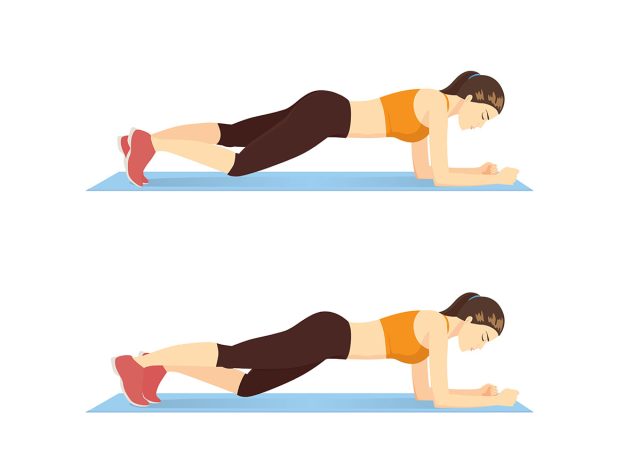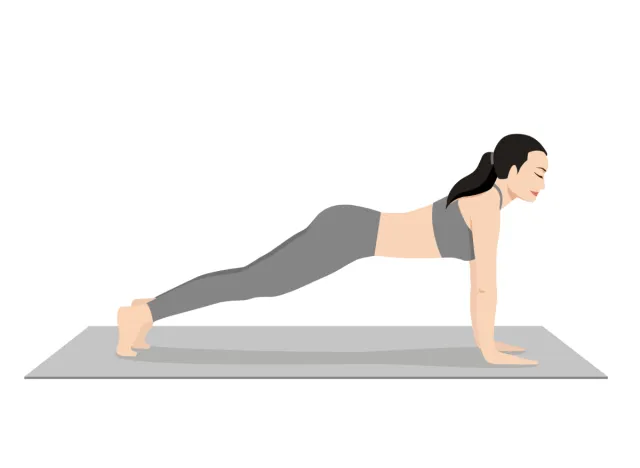Embrace a Plant at 45? Your Core Strength is Exceptional!
The plank is an enduring staple of fitness routines, renowned not just for its simplicity but for its ability to challenge strength and endurance in remarkable ways. It’s not all about sheer muscle power, either; this exercise pulls together various facets of functional fitness. Pamela Paley, a Club Pilates Master Trainer based in Gilbert and Goodyear, Arizona, emphasizes that the plank is a test of your body’s stability and resilience. Curious to know just how long you should be holding that position to signal elite core strength after 45? Let’s dive in.
- Advertisement -
Core strength is truly the bedrock of overall fitness. “Your core serves as the bridge between your upper and lower body,” Pamela explains. “A strong core not only enhances your posture but also significantly reduces the risk of injuries and helps you move more fluidly and without pain.” Imagine trying to build a house without a solid foundation; that’s your body without a strong core. Weakness in this area can lead to instability throughout your entire structure.
Now, don’t be fooled by the apparent ease of the forearm or high plank. This seemingly straightforward position actually enlists a multitude of muscle groups—your obliques, abdominals, shoulders, lower back, quadriceps, and, yes, even those glutes. “A weak link in any of these areas can manifest as shaking, sagging, or misalignment,” Pamela points out. Who knew something so simple could reveal so much?
How Long Should You Hold a Plank for Peak Core Strength?
When it comes to holding a plank, Pamela sets the bar pretty high: “If you’re over 45, holding a plank for more than two minutes is a solid indicator of impressive core endurance, stabilization, and alignment.” However, she stresses that maintaining proper form is more essential than the duration itself. After all, poor form can easily expose underlying weaknesses.
As you get into that plank position, keep these pointers in your back pocket:
- If your back starts to sag, it’s a clear sign that your glutes and core might need some strengthening.
- Should your shoulders fatigue quickly, it’s time to focus on upping your upper-body strength.
- If you find yourself shaking, it’s a cue that your control and stability need a bit of work, but don’t fret—so long as it’s pain-free and you maintain alignment, shaking is perfectly normal!
How to Improve Your Plank Holds
Forearm Planks:

- Start with your forearms resting on a stable surface—think step or sturdy box—not directly on the floor.
- Bend your elbows under your shoulders, with your knees bent beneath your hips.
- Maintain a flat back and engage your core.
- Begin holding for 15, 30, and then 45 seconds.
- Next, extend one leg straight back and hold your position.
- Follow this by extending both legs behind you.
- Ensure your glutes don’t sag or overly lift as you hold.
- Finally, transition to placing your forearms on the ground and hold that stance.
Straight-Arm Planks:

- Begin with your hands directly beneath your shoulders on the ground.
- Align your knees beneath your hips and engage your core.
- Hold for 15 seconds, then 30, and finally 45.
- Once you achieve stability and alignment, extend one leg and the opposite arm forward, holding that position.
- Once you can hold that for 45 seconds, transition into a full high plank with both legs extended behind you.
“Good luck with your planks! Enjoy them!” Pamela exclaims. “They engage your entire body, and personally, I’m particularly fond of forearm planks. If your shoulders are in good shape, feel free to mix things up by flexing and pointing your feet; it turns you into a remarkable body saw, moving forward and backward while stabilizing everything!”
So, whether you’re working through your daily workout or just trying to maintain a healthy lifestyle, don’t underestimate the power of the plank. Keep it fun, keep it consistent, and see how your body transforms.
Report By Axadle
